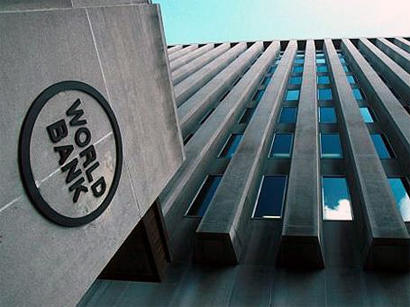WB senior specialist talks modernization of Kazakhstan's irrigation system

By Trend
Most of the irrigation infrastructure requires substantial upgrade and modernization in Central Asian countries, including Kazakhstan, World Bank Senior Irrigation and Drainage Specialist Kazuhiro Yoshida told Trend.
Thus, according to Yoshida, the main problem in the region is that large-scale irrigation schemes were constructed from 1960s to the 1980s and the infrastructure has aged since then.
"Dramatic shifts from state-controlled farms to individual farms necessitated that the newly created individual farmers take over responsibility for the management, operation and maintenance of water systems. This has started happening, with water users starting to cooperate by creating Water Users Associations (WUAs). However, many members of the WUAs lack the necessary skills and experience to manage the infrastructure and service and need advice and support from the government," Yoshida said.
Hence, he noted, the performance of the WUAs in Central Asia is generally weak and does not necessarily lead to equitable water distribution.
"The share of operation and maintenance costs recovered from the WUAs is only about 30 percent. The remaining costs are borne by the state, which amounts to a significant fiscal load, including the energy cost for pumping schemes," Yoshida said.
Irrigated agriculture in Central Asia yields results far below its potential due to a range of factors including water shortage, poor water management at farm level and lack of modern and well-adapted agronomic inputs and practices. Agricultural advisory service is largely missing so that farmers do not have access to sound and reliable knowledge and support for improving crop yields.
"In addition, inadequate water management and poor drainage have led to widespread soil salinization. Nearly 40 percent of the irrigated areas in the region are affected by salinization. Finally, irrigation has not adapted to changes in agriculture. As we witness countries diversifying their agricultural production from grains to horticulture crops (fruits and vegetables), the delivery of irrigation services needs to also change to be more flexible and responsive. All of this is also the case in Kazakhstan," Yoshida said.
He went on to say that since irrigation is underperforming, that affects directly the agricultural outputs.
"Currently, there is a huge market-driven incentive to diversify agriculture production towards horticulture and livestock, which require more flexible water delivery, drainage, and irrigation for pastures," Yoshida said.
Talking about measures that governments of Central Asian countries should take to accelerate development of agriculture, Yoshida mentioned the following measures:
- Development of a strategic vision for the sector.
"It is important to have long-term, medium-term and short-term development plans for the agriculture sector, taking into consideration the role of this sector for economic growth, exports, jobs, food security, and natural resources conservation," Yoshida said.
- Removal of market distortions and reform the markets for land, labor, and capital.
"Eliminate the state production system and any other direct government involvement in agricultural production and marketing and remove export restrictions. Then, the development of the land lease market would help move farmland from less to more efficient farmers. Reforming banking sector and introducing financial products and collateral requirements suitable for agriculture would improve access to finance. Moreover, improvement of human capital in rural areas would make farmworkers more productive," Yoshida noted.
- Investment in productivity-enhancing programs.
"Increase public investments in programs that increase agricultural productivity and profits. Such programs include agricultural research and development, advisory services, sanitary and phytosanitary measures, quality assurance systems, good agricultural practices, market information, and rural infrastructure," Yoshida concluded.
---
Follow us on Twitter @AzerNewsAz
Here we are to serve you with news right now. It does not cost much, but worth your attention.
Choose to support open, independent, quality journalism and subscribe on a monthly basis.
By subscribing to our online newspaper, you can have full digital access to all news, analysis, and much more.
You can also follow AzerNEWS on Twitter @AzerNewsAz or Facebook @AzerNewsNewspaper
Thank you!
